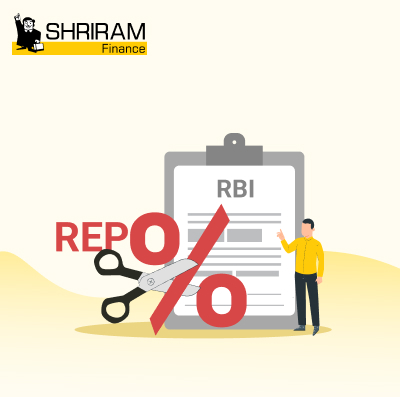The Reserve Bank of India (RBI) regulates money supply and interest rates in our economy through its periodic repo rate revisions. The repo rate refers to the interest rate at which the RBI lends to commercial banks and other financial institutions. The RBI enables financial institutions to borrow money at lower rates by lowering the repo rate. This eventually gets transmitted as lower lending rates for consumers, boosting credit growth and economic activity.
On 7 February 2025, the RBI's Monetary Policy Committee (MPC) announced a 25 basis point reduction in the prevailing repo rate, bringing it down from 6.50% to 6.25%. This was the first repo rate cut in nearly five years and was primarily driven by the easing of inflationary pressures in the economy.
When the repo rate is cut, financial institutions can access funds at a lower cost from the RBI, allowing them to reduce their retail lending rates. The recent cut in the repo rate has significant implications for various financial instruments, including floating rate funds. These funds invest in debt securities whose interest rates are tied to a benchmark rate, such as the repo rate. As the repo rate decreases, it can influence the attractiveness and performance of floating rate funds. This article explores how repo rate cuts impact floating rate funds and why they might become more appealing to investors in such economic conditions.
What Are Floating-Rate Funds?
Floating rate funds primarily invest in debt securities with floating interest rates, such as bonds and loans. These funds offer the potential for higher returns when interest rates rise, as the yields on their underlying securities can increase. However, in a scenario where interest rates are falling, like after a repo rate cut, the returns on these funds may not be as appealing as they were before.
Impact of Repo Rate Cut on Floating Rate Funds
When the RBI cuts the repo rate, it reduces the cost of borrowing for banks, which can lead to lower interest rates across various financial instruments. For floating rate funds, this means that the yields on their investments may decrease, potentially reducing the overall returns for investors. However, these funds can still offer benefits by providing liquidity and diversification in a portfolio.
Fixed Deposits: A Stable Alternative
Fixed deposits, on the other hand, offer a different set of benefits. They provide guaranteed returns that are not affected by changes in the repo rate once the deposit is booked. This stability is particularly appealing to risk-averse investors who prioritize predictable income over potentially higher but uncertain returns.
Why Fixed Deposits Remain Attractive
- Predictable Returns: Fixed deposits offer fixed interest rates that are locked in at the time of investment, ensuring that investors receive the promised returns regardless of future rate changes.
- Reliability: FDs are considered one of the reliable investment options, as reputable NBFCs with high credit ratings (such as AAA or AA+ ratings) provide a stable investment environment.
- Flexibility: Investors can choose from a variety of tenures and interest payout options, making FDs suitable for different financial goals.
Summing Up
While floating rate funds may attract investors looking to capitalize on interest rate fluctuations, fixed deposits remain a solid choice for those seeking reliable and predictable returns. As the financial landscape evolves, understanding the strengths of each investment option can help investors make informed decisions that align with their financial goals.
































